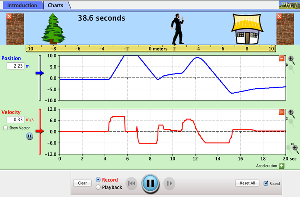Hi Everyone - There is a message on my home page re the future of this site.
Year 10 Science
The following curriculum resources are designed for units which follow the Australian Curriculum. Each unit is one term long and will have a central topic such as Chemistry, Biology, Physics, or Geology. The Learning Goals and Success Criteria documents are the key guide to the instructional program for each unit.The units, in order are;
Term 1: Genetics and Evolution
Term 1 & 2: Chemistry and the Assignment
Term 2:Physics and Motion.
Semester 1 Exam:Revion sheets, Practice tests, and answers.
Term 3: Physical Science - CHEMISTRY
Term 4: Physical Science - PHYSICS
Unit 1: Genetics and Evolution
Students will investigate the importance of DNA and genes in controlling characteristics of organisms. They will extract DNA and explore the ethics of genetic manipulation. The theory of evolution and evidence supporting it will be introducedAssessment: Examination, start of week 7.
![]() Learning Goals and Success Criteria- link with Term planner, but are more important as all the assessment will draw from these goals and criteria
Learning Goals and Success Criteria- link with Term planner, but are more important as all the assessment will draw from these goals and criteria
![]() Term 1 student planner. Note this covers the whole term, not just the six weeks of the Genetics Unit.
Term 1 student planner. Note this covers the whole term, not just the six weeks of the Genetics Unit.
LG 1 - I can describe the structure and role of DNA as the blueprint for controlling the characteristics of organisms.
![]() LG 1 Homework sheet. Will give you a due date in class.
LG 1 Homework sheet. Will give you a due date in class.
![]() What is DNA and how does it work? - by Stated Clearly (includes bases and proteins). Explains how DNA makes things work.
What is DNA and how does it work? - by Stated Clearly (includes bases and proteins). Explains how DNA makes things work.
![]() What is a GENE? - by Stated Clearly (nice intro to topic and rationale for study)
What is a GENE? - by Stated Clearly (nice intro to topic and rationale for study)
![]() DNA - notes, Use these notes in combo with the diagrams below. Cut these notes into sections and paste in with the correct diagrams from below.
DNA - notes, Use these notes in combo with the diagrams below. Cut these notes into sections and paste in with the correct diagrams from below.
![]() Diagrams to help with this Learning goal - they may appear confusing at first, but if you read the notes above you can see how the diagrams complement the notes. I will hand these out in class to paste in your notebook with the notes.
Diagrams to help with this Learning goal - they may appear confusing at first, but if you read the notes above you can see how the diagrams complement the notes. I will hand these out in class to paste in your notebook with the notes.
![]() Is it you or the world? - Looks at the influence of genetics versus the environment
Is it you or the world? - Looks at the influence of genetics versus the environment
![]() Genetics - Music video about history of DNA and predicting inheritance (good). Very general, not for notes, but I liked it as it was well constructed.
Genetics - Music video about history of DNA and predicting inheritance (good). Very general, not for notes, but I liked it as it was well constructed.
![]() Building a DNA model - A set of instructions (first two pages) and templates to make a double helix model. Based on an old CSIRO resource. I print p3 on coloured card (x4), and p4 on white card (in colour, x8). Manilla folders work if you have no card.
Building a DNA model - A set of instructions (first two pages) and templates to make a double helix model. Based on an old CSIRO resource. I print p3 on coloured card (x4), and p4 on white card (in colour, x8). Manilla folders work if you have no card.
![]() WORKSHEET - covers DNA, chromos, genes - simple word fill in.
WORKSHEET - covers DNA, chromos, genes - simple word fill in.
![]() DNA, Chromosomes, and Gene - by Origins Resources. Not the most exciting but the summary brings together the dna v chromsome v gene idea well. Use for notes.
DNA, Chromosomes, and Gene - by Origins Resources. Not the most exciting but the summary brings together the dna v chromsome v gene idea well. Use for notes.
 Extracting DNA from Fruit - by Genetic Science Learning Centre. Really good clear steps, has links to commonly asked questions, and at the bottom a link to a downloadable pdf.
Extracting DNA from Fruit - by Genetic Science Learning Centre. Really good clear steps, has links to commonly asked questions, and at the bottom a link to a downloadable pdf.
 Simple QUIZZ - online BBC quizz need to know all this, repeat until you get 7 out of 7.
Simple QUIZZ - online BBC quizz need to know all this, repeat until you get 7 out of 7.
LG 2 - I can recognise that genetic information passed on to offspring is from both parents by meiosis and fertilisation.
![]() Gametes and Meiosis - notes. Print out two to a page. These are off centre, so students can make annotations beside them. As a class we will highlight some notes.
Gametes and Meiosis - notes. Print out two to a page. These are off centre, so students can make annotations beside them. As a class we will highlight some notes.
 Construct a genetics wheel from some simple inherited traits - Will use this one in class.
Construct a genetics wheel from some simple inherited traits - Will use this one in class.
 Another genetics wheel handout - - simpler set out, but will likely not use this one in class. Will need to show students how to identify the traits.
Another genetics wheel handout - - simpler set out, but will likely not use this one in class. Will need to show students how to identify the traits.
LG 3 - I can predict simple ratios and represent patterns of inheritance of a simple dominant/recessive characteristic and genes that are sex-linked.
simple mono-hybrid inheritance patterns
![]() Mendelian Genetics - 16 min video by professor Dave, stop at 10 mins. Very good and to the point. We only need the first 10 mins, but it is super dense with terminology and knowledge, so strap youelf in and get ready for a brain overload.
Mendelian Genetics - 16 min video by professor Dave, stop at 10 mins. Very good and to the point. We only need the first 10 mins, but it is super dense with terminology and knowledge, so strap youelf in and get ready for a brain overload.
![]() Mendel and Genetics - offset notes, glue in and annotate these notes. There are a LOT of definitions you need to know. This topic is very wordy.
Mendel and Genetics - offset notes, glue in and annotate these notes. There are a LOT of definitions you need to know. This topic is very wordy.
![]() Monohybrid Crosses - offset notes, glue in and annotate these notes.
Monohybrid Crosses - offset notes, glue in and annotate these notes.
![]() Punnet Square examples - 19 mins by Robert Woodruff. This is very old school - no exciting graphics or images, just good solid simple introduction to the process of solving monohybrid Qs using punnet squares - go figure.
Punnet Square examples - 19 mins by Robert Woodruff. This is very old school - no exciting graphics or images, just good solid simple introduction to the process of solving monohybrid Qs using punnet squares - go figure.
![]() Monohybrid Crosses worksheet - good intro for extension students. The logical "thinkthrough" way of identifying offspring is shown, and space is left to show students how a punnet square can be used to save time.
Monohybrid Crosses worksheet - good intro for extension students. The logical "thinkthrough" way of identifying offspring is shown, and space is left to show students how a punnet square can be used to save time.
![]() Nice introduction to simple monohybrid crosses worksheet
Nice introduction to simple monohybrid crosses worksheet
![]() monohybrid cross questions worksheet
monohybrid cross questions worksheet
![]() even more practice at monhybrid crosses worksheet
even more practice at monhybrid crosses worksheet
 online multichoice questions on Monohybrid crosses -by "the Biology Project"(hard)
online multichoice questions on Monohybrid crosses -by "the Biology Project"(hard)
Sex-linked mono-hybrid inheritance patterns
![]() Types of Inheritance - an excellent powerPoint explaining sex-linked, incomplete, Codominance, and Dihybrid crosses. We only need to know the sex-linked stuff.
Types of Inheritance - an excellent powerPoint explaining sex-linked, incomplete, Codominance, and Dihybrid crosses. We only need to know the sex-linked stuff.
![]() Incomplete Dominance, CoDominance, Sex-linked Inheritance - Clip of a PwrPt, simple and clear intro to these topics, but only need the sex-linked stuff.
Incomplete Dominance, CoDominance, Sex-linked Inheritance - Clip of a PwrPt, simple and clear intro to these topics, but only need the sex-linked stuff.
 Online colour blindness check - Some simple tests I can project and use in class. This is a teaching tool only - colours vary with projectors, so a proper test is needed to diagnose colour blindness.
Online colour blindness check - Some simple tests I can project and use in class. This is a teaching tool only - colours vary with projectors, so a proper test is needed to diagnose colour blindness.
![]() Sex-linked Inheritance - offset notes, glue in and annotate these notes.
Sex-linked Inheritance - offset notes, glue in and annotate these notes.
![]() Sex-linked Inheritance questions worksheet
Sex-linked Inheritance questions worksheet
 online multichoice questions on sex-linked inheritance -by "the Biology Project"(hard)
online multichoice questions on sex-linked inheritance -by "the Biology Project"(hard)
Pedigree inheritance patterns
 Pedigree notes - From the Khan Academy video (site) below. No rules, just explain how to use reasoning to identify inheritance patterns.
Pedigree notes - From the Khan Academy video (site) below. No rules, just explain how to use reasoning to identify inheritance patterns.
![]() Pedigrees - Simple notes as introduction. Turner/Cornell style note-taking, use this sheet to make your notes
Pedigrees - Simple notes as introduction. Turner/Cornell style note-taking, use this sheet to make your notes
![]() Introduction to pedigrees - 6+ mins. A Khan academy video. Great for our course, hoever it approaches determining genotype from a logic, problem solving view, and many student prefer rules to follow. I add the two key rules (in the notes above) to the problem solving shown in this video.
Introduction to pedigrees - 6+ mins. A Khan academy video. Great for our course, hoever it approaches determining genotype from a logic, problem solving view, and many student prefer rules to follow. I add the two key rules (in the notes above) to the problem solving shown in this video.
 Pedigree worksheet - see p. 2 & 3 for autosomal recessive pedigree questions. ANSWERS are here.
Pedigree worksheet - see p. 2 & 3 for autosomal recessive pedigree questions. ANSWERS are here.
 Pedigree worksheet - see p. 2 & 3 for sex-linked recessive pedigree questions. ANSWERS are here.
Pedigree worksheet - see p. 2 & 3 for sex-linked recessive pedigree questions. ANSWERS are here.
Overall range of questions
 Pedigree and monohybrid crosses 3 pages
Pedigree and monohybrid crosses 3 pages
![]() Take home exam on Inheritance questions (LG2) - there are some good quality straight forward questions here. Use them to practice your processes. Remember that the punnet square type questions all use a similar process, as to all the pedigree type questions.
Take home exam on Inheritance questions (LG2) - there are some good quality straight forward questions here. Use them to practice your processes. Remember that the punnet square type questions all use a similar process, as to all the pedigree type questions.
 Answers to the take home exam questions
Answers to the take home exam questions
![]() Group work on the take home exam - what are the key knowledge and processes you need for each question on take home exam - result of group work in the class
Group work on the take home exam - what are the key knowledge and processes you need for each question on take home exam - result of group work in the class
Dihybrid and incomplete dominance questions - not in this course anymore.
![]() Dihybrid crosses - Turner/Cornell style note-taking, use this sheet to make your notes
Dihybrid crosses - Turner/Cornell style note-taking, use this sheet to make your notes
![]() Doing a Dihybrid Cross - not well explained at the start but a great example of analysing the results of a dihybrid cross
Doing a Dihybrid Cross - not well explained at the start but a great example of analysing the results of a dihybrid cross
 Dihybrid cross questions worksheet
Dihybrid cross questions worksheet
 online multichoice questions on Dihybrid crosses -by "the Biology Project"(hard)
online multichoice questions on Dihybrid crosses -by "the Biology Project"(hard)
![]() Co-Dominant and Incomplete dominance - Turner/Cornell style note-taking, use this sheet to make your notes
Co-Dominant and Incomplete dominance - Turner/Cornell style note-taking, use this sheet to make your notes
LG 4 - I can understand that mutations are changes in DNA or chromosomes, and the factors that contribute to causing mutations.
I will most likely put some brief notes on the board. The knowledge needed for this course is not extensive and the "big picture" stuff can be very interesting. Probably start with the question; who has a mutation?
 Genetic mutations - article by Suzanne Clancy. Summary of an article in 2008 Nature Education. Scroll down to "Types of changes in DNA" and you will find some good notes for this course. Good quality info.
Genetic mutations - article by Suzanne Clancy. Summary of an article in 2008 Nature Education. Scroll down to "Types of changes in DNA" and you will find some good notes for this course. Good quality info.
![]() Introduction to genetic mutations - (5+ mins) by the Khan academy. Good detail, more than needed. Summary is useful for notes.
Introduction to genetic mutations - (5+ mins) by the Khan academy. Good detail, more than needed. Summary is useful for notes.
![]() Types of genetic mutations - (5+ mins) by the Khan academy. not needed for this course but simple a nd clear detail. Excellent summary at end.
Types of genetic mutations - (5+ mins) by the Khan academy. not needed for this course but simple a nd clear detail. Excellent summary at end.
 Kush's story - a real life example of a point mutation - Jeans for genes site. Kush has a point mutation of the FoxG1 gene.
Kush's story - a real life example of a point mutation - Jeans for genes site. Kush has a point mutation of the FoxG1 gene.
 Henry's story - a real life example of Autosomal recessive mutation - Jeans for genes site. Henry has a genetic disease cause by an autosomal recessive mutation - inherited a recessive copy of this gene from each parent.
Henry's story - a real life example of Autosomal recessive mutation - Jeans for genes site. Henry has a genetic disease cause by an autosomal recessive mutation - inherited a recessive copy of this gene from each parent.
The following sites cover the basics of mutations. I will do brief notes on the board covering types of DNA and chromosomal mutations, inherited vs aquired (somatic) mutations, and the causes of mutations (replication and environment). The first site below is most useful for teachers, the other two for students.
![]() Mutations - (updated) by the amoeba sisters. Not sure about this one. It is interesting but not certain the information is as well presented for learning as much as it is interesting use of garphics and imagery. However lots of credit for producing a teaching resource here
Mutations - (updated) by the amoeba sisters. Not sure about this one. It is interesting but not certain the information is as well presented for learning as much as it is interesting use of garphics and imagery. However lots of credit for producing a teaching resource here
LG 5 - I can understand the theory of evolution by natural selection explains the diversity of living things.
![]() *Darwin's theory of evolution. Nice and simple, key points explained. Has three questions, the last is an excellent one.
*Darwin's theory of evolution. Nice and simple, key points explained. Has three questions, the last is an excellent one.
![]() ANSWERDarwin's theory of evolution. My answers to the three Qs on the worksheet above.
ANSWERDarwin's theory of evolution. My answers to the three Qs on the worksheet above.
 Clickview online site (their exchange video section) - more general interest than resource for this course. if you have been given a login by the school, search for Evolution, a video by david Attenborough
Clickview online site (their exchange video section) - more general interest than resource for this course. if you have been given a login by the school, search for Evolution, a video by david Attenborough
![]() Brief history of life on Earth - (36+mins) SCISHOW video. Watch this if you get the chance. Complilation of several of their videos, mainly people explaining, it's quite quick, but done very well. Both entertaining and educational.
Brief history of life on Earth - (36+mins) SCISHOW video. Watch this if you get the chance. Complilation of several of their videos, mainly people explaining, it's quite quick, but done very well. Both entertaining and educational.
 How do we know that evolution is really happening? a BBC site. very long article, but worth reading. The science is in on evolution. When DNA mapping provided evidence supporting the theory(ies) of evolution, can we finally stop arguing about it?
How do we know that evolution is really happening? a BBC site. very long article, but worth reading. The science is in on evolution. When DNA mapping provided evidence supporting the theory(ies) of evolution, can we finally stop arguing about it?
LG 6 - I can understand that evidence for evolution includes the fossil record, chemical and anatomical similarities, and geographical distribution of species.
![]() *Evidence for evolution worksheet - Completing this will form your notes for this section. The two videos below (both called Evidence for Evolution) may aid your understanding.
*Evidence for evolution worksheet - Completing this will form your notes for this section. The two videos below (both called Evidence for Evolution) may aid your understanding.
![]() Evidence for Evolution - A StatedClearly video (very simple and direct...stated very clearly!)
Evidence for Evolution - A StatedClearly video (very simple and direct...stated very clearly!)
![]() Evidence for Evolution - A Crash Course video
Evidence for Evolution - A Crash Course video
 24 myths of Evolution and Creationism-by NewScientist Magazine (scroll down for a list. Written for the recreational scientist, not a yr 10 student so buckle up and concentrate)
24 myths of Evolution and Creationism-by NewScientist Magazine (scroll down for a list. Written for the recreational scientist, not a yr 10 student so buckle up and concentrate)
 Aboriginal theory of evolution - a prezi written by 4 people but presented by Lauren Aboud. I cannot find information verifying their expertise, but generally speaking the prezi is simple, direct, and on target.
Aboriginal theory of evolution - a prezi written by 4 people but presented by Lauren Aboud. I cannot find information verifying their expertise, but generally speaking the prezi is simple, direct, and on target.
 The Dreaming - Origins
- Another indigenous perspective on evolution. Single page. From a site called Indigenous Australia whose two main authors are Mayrah Yarraga and Walibra Watts.
The Dreaming - Origins
- Another indigenous perspective on evolution. Single page. From a site called Indigenous Australia whose two main authors are Mayrah Yarraga and Walibra Watts.
 A Christian perspective on Evolution - A site run by Kevin Ham who is a well known Australian Creationist. Has a lot of resources from the creationist perspective including a famous debate he had with Bill Nye "the science guy". You decide who wins.
A Christian perspective on Evolution - A site run by Kevin Ham who is a well known Australian Creationist. Has a lot of resources from the creationist perspective including a famous debate he had with Bill Nye "the science guy". You decide who wins.
 A video discussing the Muslim perpective on Evolution - 8 mins. LDM TV Clip with the main speaker being Salahuddin Patel. Presented in a traditional TV style this simply and directly gives a perspective on Evolution from a Muslim perspective
A video discussing the Muslim perpective on Evolution - 8 mins. LDM TV Clip with the main speaker being Salahuddin Patel. Presented in a traditional TV style this simply and directly gives a perspective on Evolution from a Muslim perspective
 The Homonid Chronology - a Clickview video (login with your EQ username and password)
The Homonid Chronology - a Clickview video (login with your EQ username and password)
 Myths of Evolution -by BiologyJunction (nice and simple)
Myths of Evolution -by BiologyJunction (nice and simple)
![]() Natural selection - A Crash Course video
Natural selection - A Crash Course video
REVISION
![]() Practice test Not super complicated, more revision than a real simulation of a test, good practice though.
Practice test Not super complicated, more revision than a real simulation of a test, good practice though.
 ANSWERS to Practice test - handwritten.
ANSWERS to Practice test - handwritten.
![]() Genetics and Evolution Revision sheet Has a crossword puzzle on the back.
Genetics and Evolution Revision sheet Has a crossword puzzle on the back.
 ANSWERS to Genetics and Evolution Revision sheet - handwritten.
ANSWERS to Genetics and Evolution Revision sheet - handwritten.
![]() Revision sheet, Criteria based This on is based on the Success Criteria, so should be order the same way your notes are.
Revision sheet, Criteria based This on is based on the Success Criteria, so should be order the same way your notes are.
![]() Answers to the above revision sheet
Answers to the above revision sheet
![]() SUMMARY NOTES for this course These are not my work, but done by Ms Kirkman. They are particularly useful if you have some huge holes in your set of notes, or have been away a lot.
SUMMARY NOTES for this course These are not my work, but done by Ms Kirkman. They are particularly useful if you have some huge holes in your set of notes, or have been away a lot.
![]() Guidelines for making study notes - part exam preparation, part revision. Does not include Evolution yet.
Guidelines for making study notes - part exam preparation, part revision. Does not include Evolution yet.
Unit 2: Periodic Table and Chemical Reactions
![]() LGs and SC for this Chemistry Unit
LGs and SC for this Chemistry Unit
![]() Student Planner NOTE - this planner goes accross the end of term one and into term two.
Student Planner NOTE - this planner goes accross the end of term one and into term two.
1. Atomic Structure - 1 lesson, we need to be quick as this is really review work which we should already know.
![]() Atomic structure - Should watch this, but not compulsory. Good simple introduction
Atomic structure - Should watch this, but not compulsory. Good simple introduction
![]() Atomic structure - Only watch this if you are keen of doing Chemistry in semester 2 or in senior school. The more complex picture
Atomic structure - Only watch this if you are keen of doing Chemistry in semester 2 or in senior school. The more complex picture
![]() *Atoms and compounds - Download and open. Use this PowerPoint to complete the worksheet below. Good simple review of atoms and compounds.
*Atoms and compounds - Download and open. Use this PowerPoint to complete the worksheet below. Good simple review of atoms and compounds.
![]() *Atoms and Compounds Worksheet - Complete this worksheet - from the PowerPoint listed above.
*Atoms and Compounds Worksheet - Complete this worksheet - from the PowerPoint listed above.
![]() Chemical formulas - Complete this worksheet. The worksheet reviews the type and number of atoms in Chemical formulas (a review of Year 9 work). Will do this very quickly as a whole class activity, just to make sure students remember.
Chemical formulas - Complete this worksheet. The worksheet reviews the type and number of atoms in Chemical formulas (a review of Year 9 work). Will do this very quickly as a whole class activity, just to make sure students remember.
![]() How to draw electron configeration - Watch this so you can complete the worksheet below
How to draw electron configeration - Watch this so you can complete the worksheet below
![]() *Electronic configeration - Complete this worksheet. We will discuss this in class or view the video above. Use this sheet to write the basic electron configeration for each of the first 20 elements.
*Electronic configeration - Complete this worksheet. We will discuss this in class or view the video above. Use this sheet to write the basic electron configeration for each of the first 20 elements.
![]() Experiment Chemical formulas - Mixing solutions and naming the compounds which form and writing their formulas. Teacher guide is included.
Experiment Chemical formulas - Mixing solutions and naming the compounds which form and writing their formulas. Teacher guide is included.
This section is about understanding the organisation of the elements in the periodic table.
 *Periodic table for identifying Groups - Use the key and colour in the groups. This appears super simple but you need to memorise where these groups so do this with care. From pbs.com. Some help to identifying groups is here.
*Periodic table for identifying Groups - Use the key and colour in the groups. This appears super simple but you need to memorise where these groups so do this with care. From pbs.com. Some help to identifying groups is here.
![]() Periodic Table and Mendeleev An excellent place to start with an introduction to mendeleev and his journey to develop the most important table in science. By Crash Course
Periodic Table and Mendeleev An excellent place to start with an introduction to mendeleev and his journey to develop the most important table in science. By Crash Course
![]() *Elements and reactivity - 3 page worksheet covering key ideas in this section
*Elements and reactivity - 3 page worksheet covering key ideas in this section
![]() *Valence electrons and the periodic table. WATCH THIS Contains the secret to understanding chemistry. It really is that simple. Bit long at over 16 mins, but super short really for such an important idea - Tyler DeWitt (Simple, Excellent)
*Valence electrons and the periodic table. WATCH THIS Contains the secret to understanding chemistry. It really is that simple. Bit long at over 16 mins, but super short really for such an important idea - Tyler DeWitt (Simple, Excellent)
![]() *Periodic table and electron arrangement - Fill this out. It is the electron configeration for the first three rows of the periodic table. You did a similar task last week, so should be familiar. Watch this video if you cannot remember. Pay attention - this understanding of electron configeration is the secret to understanding the periodic table
*Periodic table and electron arrangement - Fill this out. It is the electron configeration for the first three rows of the periodic table. You did a similar task last week, so should be familiar. Watch this video if you cannot remember. Pay attention - this understanding of electron configeration is the secret to understanding the periodic table
 Periodic Table quiz Online and pretty easy.
Periodic Table quiz Online and pretty easy.
![]() Alkali metals and reactivity - shows Li to K only, but good discussion of chemistry
Alkali metals and reactivity - shows Li to K only, but good discussion of chemistry
![]() Alkali metal reactivity Brainic style - not much chemistry but very visual
Alkali metal reactivity Brainic style - not much chemistry but very visual
![]() Experiment - the reactivity of some metals (experiment worksheet)
Experiment - the reactivity of some metals (experiment worksheet)
![]() *Why atoms lose or gain electrons - Need to to have done electron configeration. Quite a slow video but it does cover the topic with depth and goes at a speed everybody can keep up with. Actually called "octet rule and valence charges" - it claims to be clear and simple and it actually is. I will make some notes from (on the white board) and we will practice writing ion notation.
*Why atoms lose or gain electrons - Need to to have done electron configeration. Quite a slow video but it does cover the topic with depth and goes at a speed everybody can keep up with. Actually called "octet rule and valence charges" - it claims to be clear and simple and it actually is. I will make some notes from (on the white board) and we will practice writing ion notation.
![]() *The periodic table on the planet MuAran If you can do this you know all you need to know! Use the clues on electron configeration and ions to complete the periodic table of MuAran elements
*The periodic table on the planet MuAran If you can do this you know all you need to know! Use the clues on electron configeration and ions to complete the periodic table of MuAran elements
 Periodic Table quiz. From NAGWA. Has some simple Qs, some not simple Qs. Would be a good review in senior Chem. Print out and answer. We will go thru answers in class.
Periodic Table quiz. From NAGWA. Has some simple Qs, some not simple Qs. Would be a good review in senior Chem. Print out and answer. We will go thru answers in class.
This week we will focus on chemical reactions - the five main type sof chemical reactions and balancing reactions.
![]() How to write Chemical formulas. INTRO, can skip. This is really a teacher guide as there are a lot of words. It is probably better to write notes (for students to copy) with less words but more examples. Students can learn how to write formulas by looking at and following examples. Nevertheless, this is an excellent and exhaustive how to guide. Has a table of ions as well.
How to write Chemical formulas. INTRO, can skip. This is really a teacher guide as there are a lot of words. It is probably better to write notes (for students to copy) with less words but more examples. Students can learn how to write formulas by looking at and following examples. Nevertheless, this is an excellent and exhaustive how to guide. Has a table of ions as well.
![]() Types of Chemical reactions - a series of 3 short vids on the main types of reactions - by JFR Science
Types of Chemical reactions - a series of 3 short vids on the main types of reactions - by JFR Science
![]() *Reaction Types - Notes and Questions - in the notes section highlight key points for your study notes. Check your understanding by doing the questions. Great worksheet adapted from here
*Reaction Types - Notes and Questions - in the notes section highlight key points for your study notes. Check your understanding by doing the questions. Great worksheet adapted from here
![]() Introduction to balancing Chemical equations Tyler DeWitt - slow, methodical, and excellent. Also has some practice examples - see below.
Introduction to balancing Chemical equations Tyler DeWitt - slow, methodical, and excellent. Also has some practice examples - see below.
![]() PRACTICE examples - balancing Chemical equations Tyler DeWitt - less diagrams than above and more practice.
PRACTICE examples - balancing Chemical equations Tyler DeWitt - less diagrams than above and more practice.
![]() *Theory and practice of balancing chemical equations - good source of notes for this section
*Theory and practice of balancing chemical equations - good source of notes for this section
![]() *Drawing and balancing Chemical Equations - Will probably use this as a whole class exercise and discussion starter. Should build understanding about how and why chemical reactions are balanced. You could use as a worksheet for individual students learning how to balance chemical equations
*Drawing and balancing Chemical Equations - Will probably use this as a whole class exercise and discussion starter. Should build understanding about how and why chemical reactions are balanced. You could use as a worksheet for individual students learning how to balance chemical equations
![]() *Balancing Equation Qs Two pages of equations to balance. Page 1 is simpler questions and some are scaffolded the same way as the worksheet above. Page 2 has equations involving polyatomic ions. Page 3 and 4 are the answers... easy as. A hard copy of the original is here. I have slightly reorganised some of the Qs on page 1 and converted to a word doc, so it is now editable.
*Balancing Equation Qs Two pages of equations to balance. Page 1 is simpler questions and some are scaffolded the same way as the worksheet above. Page 2 has equations involving polyatomic ions. Page 3 and 4 are the answers... easy as. A hard copy of the original is here. I have slightly reorganised some of the Qs on page 1 and converted to a word doc, so it is now editable.
 More practice balancing equations.
More practice balancing equations.
 Even more practice balancing equations.
Even more practice balancing equations.
![]() *Balancing equations from word equations. These are the hardest balancing types of Q. You are given a description in words and have to write chemical formula and balance the reaction.
*Balancing equations from word equations. These are the hardest balancing types of Q. You are given a description in words and have to write chemical formula and balance the reaction.
 Interactive balancing equations. Excellent interactive. Using the INTRO provides some additional tools for student who find balancing difficult. The game has 3 parts - easy, medium, and hard - 5 Qs per part.
Interactive balancing equations. Excellent interactive. Using the INTRO provides some additional tools for student who find balancing difficult. The game has 3 parts - easy, medium, and hard - 5 Qs per part.
 Simple QUIZ on Chemical reactions Mainly review of reaction ideas from year nine. Good for checking for understanding. 10 question multiple choice quiz.
Simple QUIZ on Chemical reactions Mainly review of reaction ideas from year nine. Good for checking for understanding. 10 question multiple choice quiz.
 QUIZ on balancing equations - All balancing questions. Good to go if you can do all these. 10 question multiple choice quiz.
QUIZ on balancing equations - All balancing questions. Good to go if you can do all these. 10 question multiple choice quiz.
4. Rates of Reactions
 Notes and worksheets - 7 pages. Very comprehensive for this course. Stolen from McGraw Hill by somebody. I found it in several sites and edited the notes section to fit this course.
Notes and worksheets - 7 pages. Very comprehensive for this course. Stolen from McGraw Hill by somebody. I found it in several sites and edited the notes section to fit this course.
 (some) Answers to above worksheets - 3 pages of answers out of the 5 pages of worksheets.
(some) Answers to above worksheets - 3 pages of answers out of the 5 pages of worksheets.
Chemistry Assignment - Term 2
There are two assignments below - make sure you get the correct one for you.
![]() 10 SCI Experiment This is the Science experiment for the year 10 SCI classes. You can fill out the assignment yourself (for a max mark of a C+), or use the scaffold to compile an electronic report (max mark of an A+). Your teacher can explain in more detail.
10 SCI Experiment This is the Science experiment for the year 10 SCI classes. You can fill out the assignment yourself (for a max mark of a C+), or use the scaffold to compile an electronic report (max mark of an A+). Your teacher can explain in more detail.
![]() 10 SCX Experiment NOTE - 2022 assign, I am not teaching SCX this year in year 10.This is the Science experiment for the year 10 extension science class. The first half of the assignment is the same as the one above, but the data analysis is more like the senior school version. There are a lot of resources to support this style of report writing at my page on data analysis
10 SCX Experiment NOTE - 2022 assign, I am not teaching SCX this year in year 10.This is the Science experiment for the year 10 extension science class. The first half of the assignment is the same as the one above, but the data analysis is more like the senior school version. There are a lot of resources to support this style of report writing at my page on data analysis
Below are additional resources which were not used above but I have listed here in the instance they become useful.
![]() *What is an ion? - Tyler DeWitt. Good intro to ions, but does not explain why atoms lose or gain electrons
*What is an ion? - Tyler DeWitt. Good intro to ions, but does not explain why atoms lose or gain electrons
![]() *Table of IONS - download and keep handy.
*Table of IONS - download and keep handy.
![]() Writing chemical (ionic) formulas Tyler Dwitt - good simple introduction
Writing chemical (ionic) formulas Tyler Dwitt - good simple introduction
![]() *Easy questions on chemical formula
*Easy questions on chemical formula
 *Reaction Rates - BBC Bites. Good coverage of Theory needed. Not detailed but good basics for notes
*Reaction Rates - BBC Bites. Good coverage of Theory needed. Not detailed but good basics for notes
![]() Reaction Rates - Fuse School Part 1. About right. Covers definition and how to measure rates.
Reaction Rates - Fuse School Part 1. About right. Covers definition and how to measure rates.
Unit 3: Physics and Motion
This unit requires students to develop a mathematical understanding of the motion of objects. Mathematical concepts of Speed and Velocity, Acceleration, Force, Gravitational Potential Energy, and Kinetic Energy are covered, along with Newtons three laws of Motion. The implications of forces and energy in collisions is evaluated.![]() Goals and Success Criteria for Unit
Goals and Success Criteria for Unit
![]() Term 2 Student Term Planner for Unit (for some reason with LG/SC as well?)
Term 2 Student Term Planner for Unit (for some reason with LG/SC as well?)
![]() *How to solve calculation problems in Science - CHEAT SHEET: explains how to answer problems where you have to calculate something
*How to solve calculation problems in Science - CHEAT SHEET: explains how to answer problems where you have to calculate something
Some additional resources which may prove useful later.
 Software for Video analysis. Very simple video analysis software for windows 10. Shows time, frame by frame and zoom in. Very simple to use.
Software for Video analysis. Very simple video analysis software for windows 10. Shows time, frame by frame and zoom in. Very simple to use.
![]() Questions on transposing formulas- Worksheet to practice your rearranging of formulas
Questions on transposing formulas- Worksheet to practice your rearranging of formulas
 The Physics Classroom - a Kinematics page. Has an index of pages relating to simple motion.
The Physics Classroom - a Kinematics page. Has an index of pages relating to simple motion.
Learning Goal 1 - Speed and Velocity
![]() Speed and Velocity notes - two pages - notes on speed, velocity, and measuring them.
Speed and Velocity notes - two pages - notes on speed, velocity, and measuring them.
![]() How to solve maths problems in science - a "how to" sheet with an example. For students who are not so good at math. Has an example.
How to solve maths problems in science - a "how to" sheet with an example. For students who are not so good at math. Has an example.
![]() Simple questions on Speed, Time, and Distance- Worksheet with Bob-the-builder and the Wiggles
Simple questions on Speed, Time, and Distance- Worksheet with Bob-the-builder and the Wiggles
![]() Questions on Speed, Time, and Distance- Worksheet
Questions on Speed, Time, and Distance- Worksheet
 Displacment and Distance SOPHIA slideshow by Jerry Kessler - comprehensive and initially a little complex - but keep reading - it gets easier. Use the examples (slides 5,7,8)to make sense of some of the definitions. Do the quiz (on the right hand side) after you have made your notes
Displacment and Distance SOPHIA slideshow by Jerry Kessler - comprehensive and initially a little complex - but keep reading - it gets easier. Use the examples (slides 5,7,8)to make sense of some of the definitions. Do the quiz (on the right hand side) after you have made your notes
![]() Difference between speed and velocity - this tube makes the difference seem obvious, however for most of our unit we will only consider straight line motion, so speed and velocity will have the same magnitude (same numerical value). For straight line motion speed and velocoity are calculated the same way.
Difference between speed and velocity - this tube makes the difference seem obvious, however for most of our unit we will only consider straight line motion, so speed and velocity will have the same magnitude (same numerical value). For straight line motion speed and velocoity are calculated the same way.
 velocity and motion - SOPHIA VID by Parmanand Jagnandan, just under 3 mins
velocity and motion - SOPHIA VID by Parmanand Jagnandan, just under 3 mins
Measuring simple motion and graphing
![]() Measuring speed (ticker timer) notes - my own notes, simple and direct, introduces ticker timers and how to interpret a ticker timer tape.
Measuring speed (ticker timer) notes - my own notes, simple and direct, introduces ticker timers and how to interpret a ticker timer tape.
![]() tiker timer and how to read it - good intro, simple and clear. A realistic picture of a ticker time would have been useful.
tiker timer and how to read it - good intro, simple and clear. A realistic picture of a ticker time would have been useful.
![]() Questions on ticker timer tapes and Speed. Only a couple of questions, but does cover the essentials.
Questions on ticker timer tapes and Speed. Only a couple of questions, but does cover the essentials.
![]() For Experiment - how to set up, use, and begin analysis of a ticker tape time - good introduction, but stops before showing how to do speed/velocity calculation
For Experiment - how to set up, use, and begin analysis of a ticker tape time - good introduction, but stops before showing how to do speed/velocity calculation
![]() EXPERIMENT - Measuring Speed using a ticker timer - Adapted from an excellent resource available at www.schoolphysics.co.uk
EXPERIMENT - Measuring Speed using a ticker timer - Adapted from an excellent resource available at www.schoolphysics.co.uk
Distance and speed graphs
![]() Distance v Time graphs and calculating Speed - DGCSE Science Shorts Sketch, good brief intro to this type of graph and how to interpret it.
Distance v Time graphs and calculating Speed - DGCSE Science Shorts Sketch, good brief intro to this type of graph and how to interpret it.
![]() *Interpreting gaphs of motion - notes. Print these out and glue into your notebook. Complete the parts where there are lines.
*Interpreting gaphs of motion - notes. Print these out and glue into your notebook. Complete the parts where there are lines.
![]() *Worksheet on interpreting motion graphs Print and complete the questions, glue in. Pretty much all you need for the exam, but there are some more resources below.
*Worksheet on interpreting motion graphs Print and complete the questions, glue in. Pretty much all you need for the exam, but there are some more resources below.
 Drawing Displacement / distance graphs - Harder worksheet, has answers
Drawing Displacement / distance graphs - Harder worksheet, has answers
![]() Questions on Displacement / distance Graphs - worksheet.
Questions on Displacement / distance Graphs - worksheet.
![]() Graphing distance and displacement - two questions with distance and displacement data. Students to graph and calculate speed and velocity.
Graphing distance and displacement - two questions with distance and displacement data. Students to graph and calculate speed and velocity.
Learning Goal - Acceleration
![]() Acceleration questions- practice all types of Accel Qs, Good sheet clearly structured. Stole this from here, but heavily restructured and edited the last few Qs.
Acceleration questions- practice all types of Accel Qs, Good sheet clearly structured. Stole this from here, but heavily restructured and edited the last few Qs.
![]() More Acceleration questions if you want them- practice calculating acceleration, speed/velocity and time
More Acceleration questions if you want them- practice calculating acceleration, speed/velocity and time
![]() How to calculate acceleration from a ticker timer tape - Shows acceleration calculated using displacement or distance between two dots. You can use any number of dots to calculate a displacement/distance.
How to calculate acceleration from a ticker timer tape - Shows acceleration calculated using displacement or distance between two dots. You can use any number of dots to calculate a displacement/distance.
![]() Experiment: Using a tickertimer to measure acceleration- instructions and format for data collection (brief)
Experiment: Using a tickertimer to measure acceleration- instructions and format for data collection (brief)
![]() How to do acceleration calculations - not the most fancy tube out there, but it covers the three basic calculations in acceleration questions.
How to do acceleration calculations - not the most fancy tube out there, but it covers the three basic calculations in acceleration questions.
![]() Speed v Time graphs and calculating Acceleration - DGCSE Science Shorts Sketch, good brief intro to this type of graph and how to interpret it.
Speed v Time graphs and calculating Acceleration - DGCSE Science Shorts Sketch, good brief intro to this type of graph and how to interpret it.
![]() Movie of toy car accelerating - Right click and save as (won't play directly from link). May not play in windows media player but will in others and in Kinovea. An oldie but a goodie. Only 15 frames a second, but very clear images. Use Kinovea to analyse.
Movie of toy car accelerating - Right click and save as (won't play directly from link). May not play in windows media player but will in others and in Kinovea. An oldie but a goodie. Only 15 frames a second, but very clear images. Use Kinovea to analyse.
![]() Data from toy car movie - Displacement time data from toy car movie and two graphs of it's motion. Displa ement versus time and velocity versus time.
Data from toy car movie - Displacement time data from toy car movie and two graphs of it's motion. Displa ement versus time and velocity versus time.
 Match the graph to the motion - Sounds simple...its not
Match the graph to the motion - Sounds simple...its not
![]() EEI Acceleration CORE SCIENCE- structured and editable worksheet for core science EEI on acceleration
EEI Acceleration CORE SCIENCE- structured and editable worksheet for core science EEI on acceleration
![]() EEI Acceleration EXTENSION SCIENCE- structured and editable worksheet for extension science EEI on acceleration
EEI Acceleration EXTENSION SCIENCE- structured and editable worksheet for extension science EEI on acceleration
Learning GOAL:Newton's First Law - INERTIA
I understand the concept of INERTIA to predict the motion of objects (Newtons 1st law)
![]() Truck vs bollard = Inertia example - very visual example of inertia
Truck vs bollard = Inertia example - very visual example of inertia
 simple introduction on Newton's 1st Law - play the cartoon and then close it, and go back to the main screen where there is a link to a quiz. Go to the quiz and complete it. At the end you will get a score out of 7.
simple introduction on Newton's 1st Law - play the cartoon and then close it, and go back to the main screen where there is a link to a quiz. Go to the quiz and complete it. At the end you will get a score out of 7.
![]() INERTIA - some notes and questions - Read the information and do the questions.
INERTIA - some notes and questions - Read the information and do the questions.
Newton's Second Law
LG: I understand the concept of applied balanced and unbalanced forces to predict the acceleration of objects (Newtons 2nd law)
![]() video on Newton's second law - Watch this video. This is a very simple video which discusses the 2nd law in its simplest context (no math)
video on Newton's second law - Watch this video. This is a very simple video which discusses the 2nd law in its simplest context (no math)
![]() Worksheet on Newton's second law - Simple notes and lots of questions.
Worksheet on Newton's second law - Simple notes and lots of questions.
![]() Experiment on Newton’s Second Law - instructions and questions for an experiment
Experiment on Newton’s Second Law - instructions and questions for an experiment
![]() Harder (extension) Worksheet of questions on the Second Law - has answers though! ya!
Harder (extension) Worksheet of questions on the Second Law - has answers though! ya!
Newton's third law
LG: I understand the concept of action and reaction to explain real-life effect of applying force (Newtons 3rd law).
![]() video of teaching Newton's 3rd law (4 mins) - good demonstrations and explanations of the 3rd law... I would do these demos if I was a good teacher... sadly, I'm not. Lucky we've got youtube!
video of teaching Newton's 3rd law (4 mins) - good demonstrations and explanations of the 3rd law... I would do these demos if I was a good teacher... sadly, I'm not. Lucky we've got youtube!
![]() notes on Newton's 3rd law. READ THESE before doing the video and worksheet below. Keeps it simple, good source of notes.
notes on Newton's 3rd law. READ THESE before doing the video and worksheet below. Keeps it simple, good source of notes.
![]() Three INCORRECT laws of Motion - watch this video and complete the worksheet below
Three INCORRECT laws of Motion - watch this video and complete the worksheet below
![]() Three INCORRECT laws of motion WORKSHEET Complete this worksheet- goes with the video above. The first part is easy, second half is harder.
Three INCORRECT laws of motion WORKSHEET Complete this worksheet- goes with the video above. The first part is easy, second half is harder.
Kinetic Energy
LG: I understand the concept of Kinetic energy to describe and explain the motion of objects
![]() Introduction to Kinetic Energy (KE) Optional activity - fairly slow going but methodical explanation of the formula for KE.
Introduction to Kinetic Energy (KE) Optional activity - fairly slow going but methodical explanation of the formula for KE.
![]() Triangle formula for KE calculations Watch these 3 videos - this video is Part 1 of three videos. Part 1 show how to calculate KE. Part 2 shows how to calculate mass (m), and Part 3 shows how to calculate velocity.
Triangle formula for KE calculations Watch these 3 videos - this video is Part 1 of three videos. Part 1 show how to calculate KE. Part 2 shows how to calculate mass (m), and Part 3 shows how to calculate velocity.
![]() How to do KE calculations compulsory viewing if you are intending to do physics next year - does not use a triangle formula - this is how you need to learn to solve complex equations, by rearranging them. Has all three types but lacks a little structure to the problem solving
How to do KE calculations compulsory viewing if you are intending to do physics next year - does not use a triangle formula - this is how you need to learn to solve complex equations, by rearranging them. Has all three types but lacks a little structure to the problem solving
![]() Kinetic Energy problems Complete all of these questions. This is the worksheet from the first series of 3 videos. Range of questions. Adapted from a worksheet at tes.com/teaching-resource/kinetic-energy-calculation-questions-6143705
Kinetic Energy problems Complete all of these questions. This is the worksheet from the first series of 3 videos. Range of questions. Adapted from a worksheet at tes.com/teaching-resource/kinetic-energy-calculation-questions-6143705
Gravitational Potential Energy
LG: I understand the concept of Gravitational Potential Energy AND energy transformations to describe and predict the motion of objects.
![]() *GPE and energy conversion - You only have to complete the three Qs on page one, although there are 4 pages. This worksheet (all four pages) are in the OneNote (in your homework tab, page called "Wk 3 GPE and Energy conversion", and you should complete it there. The next 3 pages are extension work and are not compulsory, although I do recommend you try to do some of these questions. Let me know if I can help you.
*GPE and energy conversion - You only have to complete the three Qs on page one, although there are 4 pages. This worksheet (all four pages) are in the OneNote (in your homework tab, page called "Wk 3 GPE and Energy conversion", and you should complete it there. The next 3 pages are extension work and are not compulsory, although I do recommend you try to do some of these questions. Let me know if I can help you.
![]() *Experiment on GPE to KE - simple experiment which goes step by step through an experiment converting GPE to KE. Could add graphing to it.
*Experiment on GPE to KE - simple experiment which goes step by step through an experiment converting GPE to KE. Could add graphing to it.
Revision Practice exams
![]() Practice exam ONE. We will do this in class in 50 mins or odd. Then we will go through the answers below.
Practice exam ONE. We will do this in class in 50 mins or odd. Then we will go through the answers below.
![]() Practice exam TWO. We will do this in class in 50 mins or odd. Then we will go through the answers below.
Practice exam TWO. We will do this in class in 50 mins or odd. Then we will go through the answers below.
Physical Science - CHEMISTRY
![]() 2024 Success Criteria and Learning Goals
2024 Success Criteria and Learning Goals
![]() Student Experiment Assignment - An electronic copy you can get your tables from. You need to write your own report, but can steal some structure from this.
Student Experiment Assignment - An electronic copy you can get your tables from. You need to write your own report, but can steal some structure from this.
Some practice of the basics.
![]() Counting Atoms - first half is easy. Need to know ionic naming versus covalent naming and writing formulas for the second part.
Counting Atoms - first half is easy. Need to know ionic naming versus covalent naming and writing formulas for the second part.
![]() Balancing Equations -being able to balance is a given by now. reorganised this sheet so it starts with the easy ones. Need to be able to do them all.
Balancing Equations -being able to balance is a given by now. reorganised this sheet so it starts with the easy ones. Need to be able to do them all.
![]() Naming compounds - Actually this can be harder, uses both ionic and covalent naming systems.
Naming compounds - Actually this can be harder, uses both ionic and covalent naming systems.
LG 1: Students will use the mole concept to describe, explain, and calculate masses of reactants and products in a chemical reaction (MOLE CONCEPT)
Percent Composition
![]() Percent Composition example. - analyse this example. What are the key steps to this calculation - make a process to solve percent composition Qs. All Qs of this type follow the same process.
Percent Composition example. - analyse this example. What are the key steps to this calculation - make a process to solve percent composition Qs. All Qs of this type follow the same process.
The Mole
STUDENTS - read this.
This unit introduces the mole, which is always confusing for some students. The primary reason chemists use moles is because we cannot count atoms (since they are way too small). So all chemists can do is measure atoms... say measure out 5 gms of aluminium... or 200 millilitre of ethanol (a liquid), or say 2 litres of oxygen (a gas). Our problem in Chemistry is that we have no idea how many atoms of aluminium are in 5 grams of it, or how many ethanol molecules are in 200 mL of ethanol. This is a major problem for one very important reason. Chemical equations are used to represent chemical reactions, and these chemcial equations involve numbers of atoms, NOT masses or volumes. So we can't use the 5 g of Aluminium in a balanced equation, we have to know the number of atoms to understand balanced equation.
Moles is the way chemists figure out an actual number of atoms from the mass or volume. This is super important because moles helps us connect the practical chemistry of weighing masses (or measuring volume), to the theoretical chemistry of balanced equations. Once students get this reasoning about why we need moles, it is simply a matter of learning the math relationships connecting masses and volume to moles, and vice versa.
![]() The mole - a series of videos - Excellent... Slow... methodical... Simple. By Tyler DeWitt. A collection of 11 videos (Show videos 1 and 2 to intro the idea of moles, videos 5,6,8 are good but optional, useful support students who have difficulty with the math)
The mole - a series of videos - Excellent... Slow... methodical... Simple. By Tyler DeWitt. A collection of 11 videos (Show videos 1 and 2 to intro the idea of moles, videos 5,6,8 are good but optional, useful support students who have difficulty with the math)
![]() Mole and Molar Mass - by JFR Science, good, succinct, usful intro to the calculation of n.
Mole and Molar Mass - by JFR Science, good, succinct, usful intro to the calculation of n.
 Calculating the Molar Mass of substances. Where it all starts - doing this is a given.
Calculating the Molar Mass of substances. Where it all starts - doing this is a given.
 Simple mole and Avagadro number Qs
Simple mole and Avagadro number Qs
 The MOLE - Multiple Choice Qs - A one pager with some simple intro multiple choice questions, no answers.
The MOLE - Multiple Choice Qs - A one pager with some simple intro multiple choice questions, no answers.
Stoichiometry - the 3 steps - putting moles and balanced equations together.
![]() Mole ratios in chemical equations - by JFR Science, good intro to doing mole ratios in chemical equations, but maybe not needed. Mole ratios are just like other ratios, so most students should pick it up easily.
Mole ratios in chemical equations - by JFR Science, good intro to doing mole ratios in chemical equations, but maybe not needed. Mole ratios are just like other ratios, so most students should pick it up easily.
![]() Stoichiometry (9mins) - by JFR Science - excellent and simple. At 3:45 the basic 3 step outline of stoichiometry is shown - very very important.
Stoichiometry (9mins) - by JFR Science - excellent and simple. At 3:45 the basic 3 step outline of stoichiometry is shown - very very important.
![]() Calculation flowchart for basic stoichiometric Q's - my version of a maths map for beginning chemists. Very customisable so change as you like.
Calculation flowchart for basic stoichiometric Q's - my version of a maths map for beginning chemists. Very customisable so change as you like.
 Stoichiomtry Questions - mass to mass only. The simplest Stoichiometry Qs. The basic process is the key here. While the Qs will get harder in the future the process remains the same... so nail the process, don't just get the answer.
Stoichiomtry Questions - mass to mass only. The simplest Stoichiometry Qs. The basic process is the key here. While the Qs will get harder in the future the process remains the same... so nail the process, don't just get the answer.
![]() Limiting Reagent - by Tyler DeWitt. Excellent and methodical as always...However there is an easier way to determine limiting reagent (dividing by coefficients). So at 10.0 mins, I will demo Tyler's Q using the simpler method rather than watch the rest of the video.
Limiting Reagent - by Tyler DeWitt. Excellent and methodical as always...However there is an easier way to determine limiting reagent (dividing by coefficients). So at 10.0 mins, I will demo Tyler's Q using the simpler method rather than watch the rest of the video.
![]() Simple ID of the Limiting Reagent - Conquer Chemistry. This is the way I use to identify the Limiting Reagent, very simple... covert masses of each reagent to moles, divide by its coefficient, pick lowest mole value.
Simple ID of the Limiting Reagent - Conquer Chemistry. This is the way I use to identify the Limiting Reagent, very simple... covert masses of each reagent to moles, divide by its coefficient, pick lowest mole value.
![]() Limiting reagent questions - These are the hardest style of Stoichiometry questions, although these Qs only involve mass to mass, so relatively easy.
Limiting reagent questions - These are the hardest style of Stoichiometry questions, although these Qs only involve mass to mass, so relatively easy.
 ANSWERS - Limiting Reagent worksheet Worked solutions to Qs 4,5,7 in the worksheet above. Answer to Q6 is provided but not worked.
ANSWERS - Limiting Reagent worksheet Worked solutions to Qs 4,5,7 in the worksheet above. Answer to Q6 is provided but not worked.
LG 2: Students will be able to use appropriate language and algorithms to describe aqueous solutions and predict changes to them. (AQUEOUS SOLUTIONS)
![]() Dissolving = Solvation - by Tyler DeWitt. Really good demonstration of what dissolving is at a basic level. All understanding, no terminology, but see notes below for that.
Dissolving = Solvation - by Tyler DeWitt. Really good demonstration of what dissolving is at a basic level. All understanding, no terminology, but see notes below for that.
 Good source of notes for these SC - from "MrsGetson" site. Terminology is important here so memorise the definitions. If it does not load, I stole a copy here , call me paranoid!
Good source of notes for these SC - from "MrsGetson" site. Terminology is important here so memorise the definitions. If it does not load, I stole a copy here , call me paranoid!
![]() Molarity, Solutions, Concentrations and Dilutions - Mr. Causey. Published on Jun 18, 2012. 10 mins. Nice and direct.
Molarity, Solutions, Concentrations and Dilutions - Mr. Causey. Published on Jun 18, 2012. 10 mins. Nice and direct.
![]() What is a Part per Million (ppm)? - an IB video by Richard Thornley. 6 mins.
What is a Part per Million (ppm)? - an IB video by Richard Thornley. 6 mins.
![]() Solve Problems Using Concentration, Amount of Solute and Volume - an IB video by Richard Thornley. 2 mins.
Solve Problems Using Concentration, Amount of Solute and Volume - an IB video by Richard Thornley. 2 mins.
 Worksheet 1 Molarity Qs - Just molarity, has answers.
Worksheet 1 Molarity Qs - Just molarity, has answers.
 Worksheet 2 - mainly Dilution Qs
Worksheet 2 - mainly Dilution Qs
LG 3: Students will predict the degree of uncertainty within the data and evaluate and explain degrees of error (MEASUREMENT and UNCERTAINTY)
There is a lot of variation in the methods of calculating and propagating uncertainty. It is likely that different subjects will have different methods. The process given below are generally accepted in science, but always listen to yor teacher carefully for their expectations. We will start with significant figures and then move onto uncertainty.
Significant figures
![]() Why do we need to know about significant figures? - by tyler DeWitt. Excellent. Slow but explains what and why. Tyler DeWitt also has an entire playlist on sig figures.
Why do we need to know about significant figures? - by tyler DeWitt. Excellent. Slow but explains what and why. Tyler DeWitt also has an entire playlist on sig figures.
 Significant figures in calculations - great page. Has the theory and two videos showing worked examples.
Significant figures in calculations - great page. Has the theory and two videos showing worked examples.
![]() Scientific notation and Significant figures - by tyler DeWitt. Excellent. Ths vid is useful as the two videos at the chem.libretexts site do not mention calculations involving scientific notation.
Scientific notation and Significant figures - by tyler DeWitt. Excellent. Ths vid is useful as the two videos at the chem.libretexts site do not mention calculations involving scientific notation.
![]() Significant figures - the RULES. NOTES A complete set of rules for working with significant figures. Very detailed (lots of people have fewer rules), but very clear.
Significant figures - the RULES. NOTES A complete set of rules for working with significant figures. Very detailed (lots of people have fewer rules), but very clear.
 Sig Figures - worksheet. Sig figure Qs and calculation Qs. Some support in this doc, so do this sheet first.
Sig Figures - worksheet. Sig figure Qs and calculation Qs. Some support in this doc, so do this sheet first.
 ANSWERS to Sig Figures worksheet above My solutions, so apologies if there are simple errors.
ANSWERS to Sig Figures worksheet above My solutions, so apologies if there are simple errors.
![]() Sig Figures - worksheet. Simple calculation Qs using sig figures.
Sig Figures - worksheet. Simple calculation Qs using sig figures.
Introduction to data and percent error
 Qualitative versus Quantitative data - nice litte simple summary. Will use for discussion, do not need notes. Has lots of info on this page but the summary near the top is all we are interested in. Need to discuss continuous versus discreet data, and why continuous data generates relationships and trends, but discrete data only generates trends.
Qualitative versus Quantitative data - nice litte simple summary. Will use for discussion, do not need notes. Has lots of info on this page but the summary near the top is all we are interested in. Need to discuss continuous versus discreet data, and why continuous data generates relationships and trends, but discrete data only generates trends.
![]() Precision/Accuracy and Percent error - these are not listed in the SC, but you need to understand these terms and use them accurately (pun intended). Lifted this and heavily edited from BYJU's Classes website.
Precision/Accuracy and Percent error - these are not listed in the SC, but you need to understand these terms and use them accurately (pun intended). Lifted this and heavily edited from BYJU's Classes website.
 How to calculate percent error - simple explanation and math equation. Only possible when you have a "text" value.
How to calculate percent error - simple explanation and math equation. Only possible when you have a "text" value.
![]() Percent Error Worksheet - uses the formula to calculate % error. Range of real life scenarios.
Percent Error Worksheet - uses the formula to calculate % error. Range of real life scenarios.
Uncertainty - identifying and propagation
![]() Uncertainty - how to Identify it. Notes and Understanding. Covers measurement and random uncertainty. This is a topic where there is a LOT of different opinion online. Stick to this PowerPoint.
Uncertainty - how to Identify it. Notes and Understanding. Covers measurement and random uncertainty. This is a topic where there is a LOT of different opinion online. Stick to this PowerPoint.
![]() Uncertainty - absolute and percentage - an IB video by Richard Thornley. 3 mins. How to determine both absolute and percent uncertainty.
Uncertainty - absolute and percentage - an IB video by Richard Thornley. 3 mins. How to determine both absolute and percent uncertainty.
 Uncertainty worksheet - Absolute and Percent uncertainty, has answers.
Uncertainty worksheet - Absolute and Percent uncertainty, has answers.
![]() Errors - Random or Systematic Notes and Understanding. Covers both types of errors made in methodology. Use these ideas to evaluate and explain reliability and validity.
Errors - Random or Systematic Notes and Understanding. Covers both types of errors made in methodology. Use these ideas to evaluate and explain reliability and validity.
 Errors - Random and Systematic - Notes and Worksheet. No answers, excellent handout, stole and significantly edited, but cannot identify original author.
Errors - Random and Systematic - Notes and Worksheet. No answers, excellent handout, stole and significantly edited, but cannot identify original author.
 ANSWERS to Errors - Random and Systematic Also not mine... no, I'm not lazy, just efficient!
ANSWERS to Errors - Random and Systematic Also not mine... no, I'm not lazy, just efficient!
![]() How to propagate Uncertainty through calulations. Four pages (2 notes, 2 Qs). Short as I could make it. Spend some time deconstruction the formulas used for propagating uncertainty - they look complex, but a relatively simple when you deconstruct them.
How to propagate Uncertainty through calulations. Four pages (2 notes, 2 Qs). Short as I could make it. Spend some time deconstruction the formulas used for propagating uncertainty - they look complex, but a relatively simple when you deconstruct them.
 ANSWERS to "how to propagate uncertanity", worksheet above. Again not mine... and again... no, I'm not lazy, just efficient!
ANSWERS to "how to propagate uncertanity", worksheet above. Again not mine... and again... no, I'm not lazy, just efficient!
Time for a prac. Will get students to make a stock solution of 100 mL of 0.5M solution of Copper sulphate (need to use mole and concentration calculations). Then by dilution, prepare 10 mL of 0.1M, 0.2M, 0.3M, 0.4M solutions (use dilution calculations). Will use the colorimeters and beer's law to create a standards graph, and use this to determine the concentration of a solution I give them. Can discuss random uncertainty of the scatter plot (Beer's Law), the propagation of measurement uncertainty in their dilution concentrations, and the percent error in their answer. Excellent!
Physical Science - PHYSICS
Assessment: Data Test![]() Learning Goals and Success Criteria for unit
Learning Goals and Success Criteria for unit
LG 1: I can analyse data in an accurate and detailed manner and consider uncertainty associated with the data (DATA ANALYSIS)
Scientific Units
![]() Intro - SI Units. - Brief intro and (see pic on the right) the units described in the SC.
Intro - SI Units. - Brief intro and (see pic on the right) the units described in the SC.
 Kinematic Qs Worksheet - 4 pages of motion Qs Good practice for the maths component of Physics
Kinematic Qs Worksheet - 4 pages of motion Qs Good practice for the maths component of Physics
Relationships in Graphs. This topic is about terminology and use of language - and goes with the next topis - so no worksheet for this part.
 Describing Relationships in Line graphs. Excellent background reading - stuff you need to know!!!
Describing Relationships in Line graphs. Excellent background reading - stuff you need to know!!!
 Recognising the shape of trend lines - Common mathematical realtionships. Extracts from the superb pdf below.
Recognising the shape of trend lines - Common mathematical realtionships. Extracts from the superb pdf below.
 Using maths to describe Relationships in Line graphs. Again, excellent background reading, but more complicated - also stuff you need to know!!! if you want to be scientifically literate.
Using maths to describe Relationships in Line graphs. Again, excellent background reading, but more complicated - also stuff you need to know!!! if you want to be scientifically literate.
Linearising Data
There are two questions about linearising data... WHY? and HOW? These topics are done suprising poorly (I will give reasons for this) in many sites. I will provide notes for this topic covering both questions.
 Complex but correct mathematical technique for Linearisation. This is more accessible if you love maths like I do. I will go through this in class. I believe it is a far simpler idea than the less complex method (only 2 techniques), but you need to understand the math.
Complex but correct mathematical technique for Linearisation. This is more accessible if you love maths like I do. I will go through this in class. I believe it is a far simpler idea than the less complex method (only 2 techniques), but you need to understand the math.
 Less complex procedure for Linearising data. One stop site - has an intro, schematics, and short video. A better copy of the diagram is here
Less complex procedure for Linearising data. One stop site - has an intro, schematics, and short video. A better copy of the diagram is here
![]() Linearising Dat.a Simpler but more to remember and this process tells you less about the mathematical model the line represents.
Linearising Dat.a Simpler but more to remember and this process tells you less about the mathematical model the line represents.
 Linearising data WORKSHEET. Use excel to manipuate the data.
Linearising data WORKSHEET. Use excel to manipuate the data.
 Linearising data WORKSHEET. - a link to some practice questions. A hard copy is here. Hard copy can be printed out for classwork.
Linearising data WORKSHEET. - a link to some practice questions. A hard copy is here. Hard copy can be printed out for classwork.
Adding Error to data in graphs
we should do a simple experiment here to practice skills adding uncertainty to a graph. Measure the mass of various (at least 5) volumes of water. Determine uncertainty of each measurement (consider both measurement and random uncertainty). Graph mass v volume, slope will be density. Include error bars. Graph a maximimum and a minimum slope two ways - one by hand using the error bars, one using linest in excel. Simple experiment, super cool nerd skills!
 How to add error bars to data in an excel graph. good site with clear explanations. The first section "How to add error bars in Excel" is for us, however we also need the third section about adding custom error values (more common in physics and Chemistry, less common in biology).
How to add error bars to data in an excel graph. good site with clear explanations. The first section "How to add error bars in Excel" is for us, however we also need the third section about adding custom error values (more common in physics and Chemistry, less common in biology).
![]() Plotting max slope and min slope for a trend line. Helps with determining uncertainty in a relationship determined by the trend line.
Plotting max slope and min slope for a trend line. Helps with determining uncertainty in a relationship determined by the trend line.
![]() Experiment - Hooke's Law. We will do the graph in excel and practice our data processing and analysis skills using excel.
Experiment - Hooke's Law. We will do the graph in excel and practice our data processing and analysis skills using excel.
![]() Practice skills using Hooke's Law. A worksheet on Hooke's Law with some good practice for out data test.
Practice skills using Hooke's Law. A worksheet on Hooke's Law with some good practice for out data test.
![]() Homework sheet on linearising data and uncertainty in slope values. Good sheet for practicing these skills for the test.
Homework sheet on linearising data and uncertainty in slope values. Good sheet for practicing these skills for the test.
LG2: I can understand the concepts of energy, work and power and how these concepts are all related (ENERGY)
1st time teaching this course - notice all the SC discuss energy (no work or power?). The resources below stick to the SC in the LG and SC, so do not cover work or power.
 TEXT Energy - mechanical, Potential, and Kinetic. 27 pages from a free source text book. Perfect for our Success Criteria (except the last two).
TEXT Energy - mechanical, Potential, and Kinetic. 27 pages from a free source text book. Perfect for our Success Criteria (except the last two).
 Simple TEXT on Energy. Fewer pages and simpler than the text above.
Simple TEXT on Energy. Fewer pages and simpler than the text above.
 Two page sumary of work and Energy.
Two page sumary of work and Energy.
We will do an improvised experiment here. Rolling a marble down a tube . This should allow us to investigate the realtionship between Kinetic energy(calculated from the original Pot. Energy of the marble) and the velocity of the marble at the bottom. Should give a curved trend line which we can linearise, and allow us to practise all the skills from LG 1.
![]() Experiment on food calorimetry The version we will use in the classroom.
Experiment on food calorimetry The version we will use in the classroom.
 Experiment on determining the energy content of foodstuffs. This is pure data analysis, so good prep for the data test. We will do this experiment in class and practice the skills you need to analyse the data, including using the data to make predictions.
Experiment on determining the energy content of foodstuffs. This is pure data analysis, so good prep for the data test. We will do this experiment in class and practice the skills you need to analyse the data, including using the data to make predictions.
![]() A food calorimetry experiment in real life What the experiment list above actually loos like. Using a digital thermometer is not necessary (but good practice if you have one) as there is signigicant heat loss in the system and super accurate thermometer reading are not really necessary.
A food calorimetry experiment in real life What the experiment list above actually loos like. Using a digital thermometer is not necessary (but good practice if you have one) as there is signigicant heat loss in the system and super accurate thermometer reading are not really necessary.
REVISION for end semester exam (Chemistry section)
![]() Revision Sheet - We will call this revision sheet one
Revision Sheet - We will call this revision sheet one
![]() Another Revision Sheet - We will call this revision sheet two
Another Revision Sheet - We will call this revision sheet two
 ANSWERS Revision Sheet 1 - My answers, let's hope they are correct.
ANSWERS Revision Sheet 1 - My answers, let's hope they are correct.
 ANSWERS Revision Sheet 2 - My answers, same hopeful thinking as above
ANSWERS Revision Sheet 2 - My answers, same hopeful thinking as above
![]() Practice Test - Chemistry component - 30 mins
Practice Test - Chemistry component - 30 mins
![]() ANSWERS Practice Test - Chemistry component - 30 mins
ANSWERS Practice Test - Chemistry component - 30 mins
General Science
This topic is several years old and designed for the second half of a more general science course. Many of the resources relate to sustainability, earth cycles, and the Universe. They are here in the instance I will use them again at some point.
SECTION 1 - Spheres of the Earth
LG 1: Relate changes in the four spheres of Earth’s biophysical environment to changes in biodiversity
![]() Simple pre and post test on LG 1 - could do prior and post coverage of this unit.
Simple pre and post test on LG 1 - could do prior and post coverage of this unit.
![]() Biophysical Environment - Ecosystems and Interactions - Clickview video online (my library): you will have to login and if link is not direct then search for this video title
Biophysical Environment - Ecosystems and Interactions - Clickview video online (my library): you will have to login and if link is not direct then search for this video title
![]() Multiple Choice Qs - The Biophysical Environment- do as pre and post video quiz answers (at end)
Multiple Choice Qs - The Biophysical Environment- do as pre and post video quiz answers (at end)
![]() Schematic of 4 Spheres of the earth- there are 6 repeat pics on the page
Schematic of 4 Spheres of the earth- there are 6 repeat pics on the page
![]() 4 Spheres of the Earth - good source of basic knowledge notes for each sphere.
4 Spheres of the Earth - good source of basic knowledge notes for each sphere.
 Atmosphere - Hover over the name of each layer, good source of basic knowledge notes.
Atmosphere - Hover over the name of each layer, good source of basic knowledge notes.
 Atmosphere - Use the interactive buttons, useful to show temperature pattern.
Atmosphere - Use the interactive buttons, useful to show temperature pattern.
 Surface Ocean currents - Information explaining the key ocean currents driving Australain climate..
Surface Ocean currents - Information explaining the key ocean currents driving Australain climate..
 Australian Surface Ocean currents
Australian Surface Ocean currents
 Where all the water is - and you thought there was a lot! Turn this info into a triple pie graph
Where all the water is - and you thought there was a lot! Turn this info into a triple pie graph
 Monitor Australia site - click on the explore button, then use the drop down boxes to focus in on Maroochydore region. Use right hand menu to change the display
Monitor Australia site - click on the explore button, then use the drop down boxes to focus in on Maroochydore region. Use right hand menu to change the display
 Ecological footprint calculator - try this out. Can you change some of the data you put in so that you reduce your ecological footprint?
Ecological footprint calculator - try this out. Can you change some of the data you put in so that you reduce your ecological footprint?
SECTION 2 - Cycles in Nature
LG 2: I understand the four main cycles that occur within the biosphere
![]() Water Cycle Worksheets.docx - Adapted from science-class.net Click here for ANSWERS
Water Cycle Worksheets.docx - Adapted from science-class.net Click here for ANSWERS
 Carbon Cycle interactive for worksheet - use menu on right to delete all info and then intro it one bit at a time, making it easier to understand all the information in the cycle diagram.
Carbon Cycle interactive for worksheet - use menu on right to delete all info and then intro it one bit at a time, making it easier to understand all the information in the cycle diagram.
![]() Carbon cycle diagram and worksheet Uses the website above. Adapted from an original sheet here
Carbon cycle diagram and worksheet Uses the website above. Adapted from an original sheet here
 Nitrogen cycle - good source of notes if you miss class
Nitrogen cycle - good source of notes if you miss class
 Nitrogen cycle - good diagram. Complex, but gives a good overview of the processes.
Nitrogen cycle - good diagram. Complex, but gives a good overview of the processes.
 Powerpoint slide on the Phosphous Cycle - Good yet simple description of cycle, good diagram, how it circulates in each of three spheres, and Human impact
Powerpoint slide on the Phosphous Cycle - Good yet simple description of cycle, good diagram, how it circulates in each of three spheres, and Human impact
![]() Cloze exercises for each cycle
Cloze exercises for each cycle
SECTION 3 - Human impact of global ecosystems
LG 3: I understand the impact that human activity has on global systems
 Try a Climate Change quiz - take the quiz individually or as a class, see how you fare!
Try a Climate Change quiz - take the quiz individually or as a class, see how you fare!
 WWF Living planet Report (summary)
WWF Living planet Report (summary)
 CSIRO What is Climate Change - good simple source of notes and understanding of the differences between weather, climate change, and climate variation. Good Q and A on the left menu.
CSIRO What is Climate Change - good simple source of notes and understanding of the differences between weather, climate change, and climate variation. Good Q and A on the left menu.
 Global Warming - Diagram and explaination by How Stuff Works
Global Warming - Diagram and explaination by How Stuff Works
 2100 predicted sunshine coast sea levels - this is a maximum range based prediction of the coastline for the Sunshine Coast in 2100. More detail and other predictions are available here
2100 predicted sunshine coast sea levels - this is a maximum range based prediction of the coastline for the Sunshine Coast in 2100. More detail and other predictions are available here
 Information on Sea level change - scroll down for background, good source of notes
Information on Sea level change - scroll down for background, good source of notes
![]() The Greenhouse Effect Worksheet - adapted from an excellent resource at Germanwatch. The original resource can be sourced here
The Greenhouse Effect Worksheet - adapted from an excellent resource at Germanwatch. The original resource can be sourced here
![]() Patterns in Global Temperature Worksheet- adapted from an excellent resource at Germanwatch. The original resource can be sourced here
Patterns in Global Temperature Worksheet- adapted from an excellent resource at Germanwatch. The original resource can be sourced here
![]() Consequences of Climate Change Worksheet- adapted from an excellent resource at Germanwatch. The original resource can be sourced here
Consequences of Climate Change Worksheet- adapted from an excellent resource at Germanwatch. The original resource can be sourced here
![]() Who is to blame for Greenhouse gases Worksheet- adapted from an excellent resource at Germanwatch. The original resource can be sourced here
Who is to blame for Greenhouse gases Worksheet- adapted from an excellent resource at Germanwatch. The original resource can be sourced here
![]() Documentary Our Worst-Case Scenario Earth 2100 - Lengthy and based on extrapolation (made in 2009). This is a useful movie if presented alongside classroom debate and questions.
Documentary Our Worst-Case Scenario Earth 2100 - Lengthy and based on extrapolation (made in 2009). This is a useful movie if presented alongside classroom debate and questions.
SECTION 4 - Whats in the Universe
LG 4: I understand the features that the universe contains
![]() Zoom out from planet Earth - not a bad start to understand the scale of the universe. Vid is measured in light years so need to understand what they are,
Zoom out from planet Earth - not a bad start to understand the scale of the universe. Vid is measured in light years so need to understand what they are,
![]() A brief history of space discovery - Clickview Online (use your EQ login). Not new but i liked the way it went through all the key developments in Astronomy.
A brief history of space discovery - Clickview Online (use your EQ login). Not new but i liked the way it went through all the key developments in Astronomy.
![]() Introduction to the Universe - good basic stuff. Excellent source of notes for understanding how we categorise stuff we find in the universe
Introduction to the Universe - good basic stuff. Excellent source of notes for understanding how we categorise stuff we find in the universe
![]() Aboriginal Astronomy - video discussing evidence of ancient astronomy site in Australia
Aboriginal Astronomy - video discussing evidence of ancient astronomy site in Australia
![]() Life cycle of Stars - Information and worksheets
Life cycle of Stars - Information and worksheets
 Glossary - some simple explanations of the terms you will encounter when we talk about the Universe
Glossary - some simple explanations of the terms you will encounter when we talk about the Universe
 Light Year - a simple down to earth description of a light year
Light Year - a simple down to earth description of a light year
 Light Year - a little more detail.
Light Year - a little more detail.
![]() Measuring distances in the Universe - TedEd video (hosted on youtube). Nice and clear explanation of how we know how far things are from us in the unverse.
Measuring distances in the Universe - TedEd video (hosted on youtube). Nice and clear explanation of how we know how far things are from us in the unverse.
![]() How we study the Universe - TedEd video (hosted on youtube). Explains a few basic ideas about study of the universe.
How we study the Universe - TedEd video (hosted on youtube). Explains a few basic ideas about study of the universe.
SECTION 5 - The Big Bang Theory
LG 5: I understand that the Big Bang Theory can be used to explain the origin of the universe
 History of Earth versus the universe - worksheet to construct calendar equivelent to one year.
History of Earth versus the universe - worksheet to construct calendar equivelent to one year.

Yr 10 SCIENCE: Downloads and links
 Online Science Quiz - set the number of qs to 5, click continue.
Online Science Quiz - set the number of qs to 5, click continue.
 Aust Curriculum - Science Year 10
Aust Curriculum - Science Year 10
 Periodic Table - see the top tabs
Periodic Table - see the top tabs
![]() Balancing Chemical Equations (14m 28s)
Balancing Chemical Equations (14m 28s)
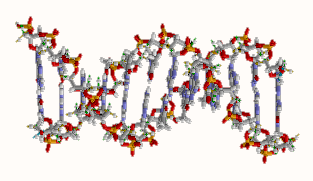
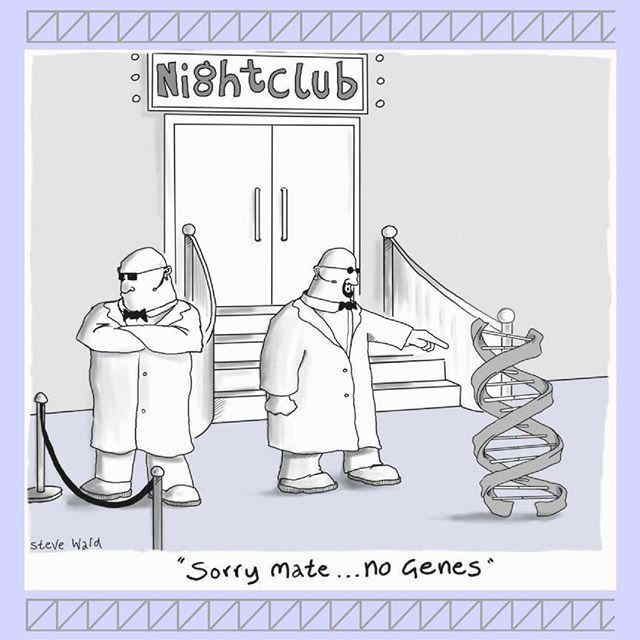
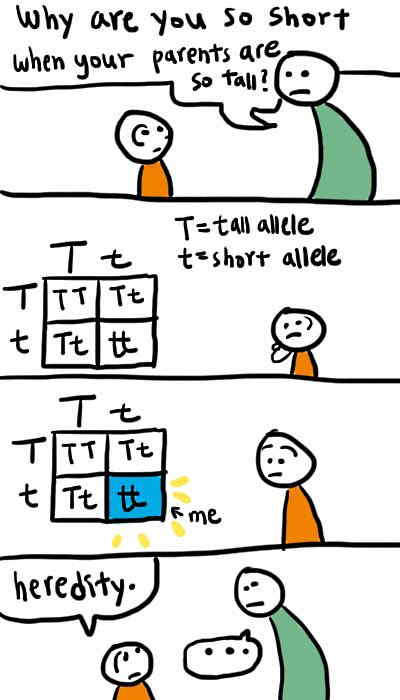
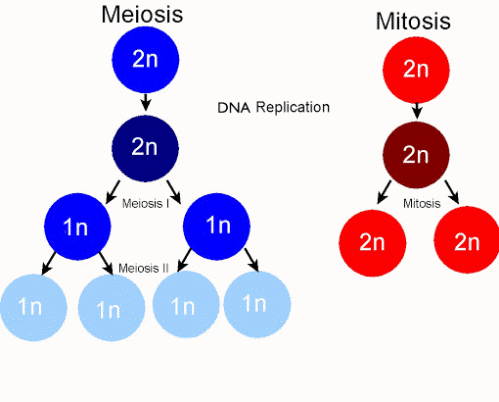
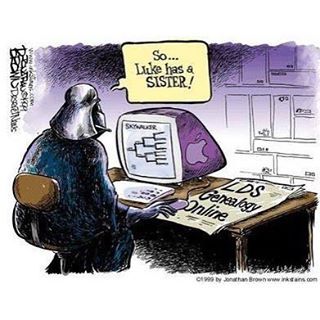
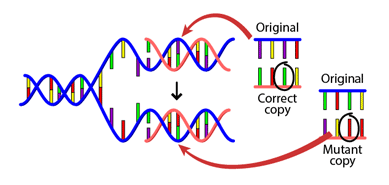
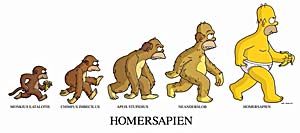
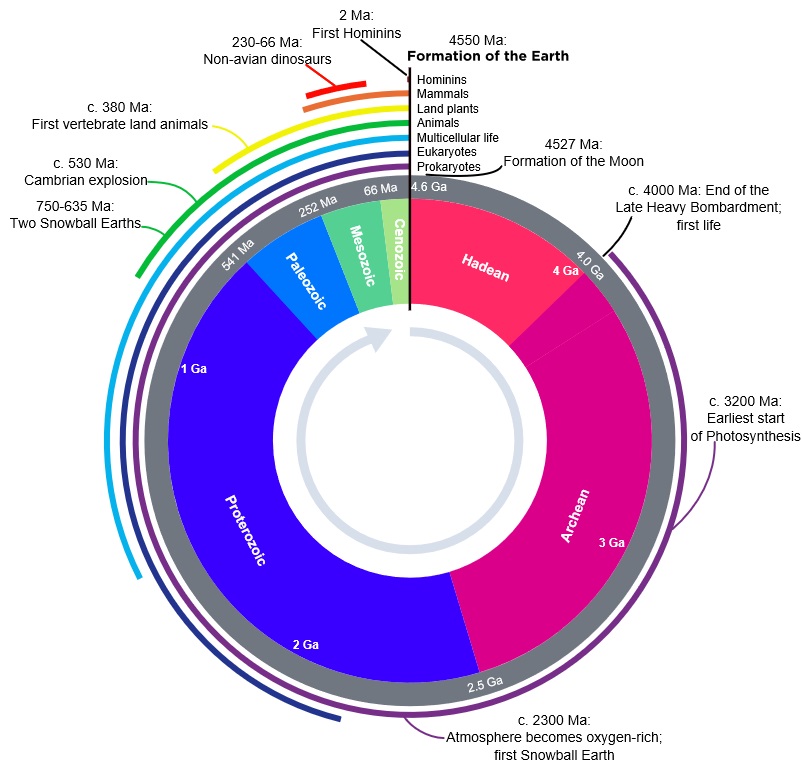

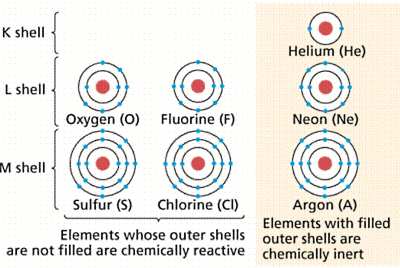






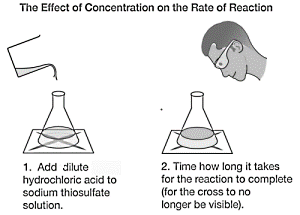
"The Moving Man". This simulation from phet.colorado.edu will download and run on your computer, if java is enabled.Original site
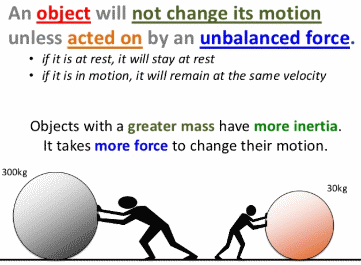
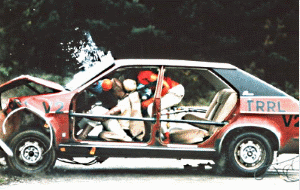
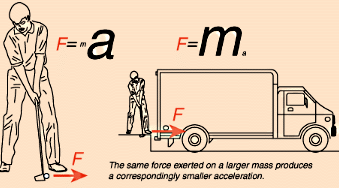


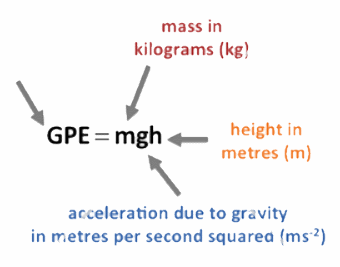
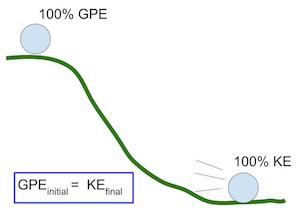
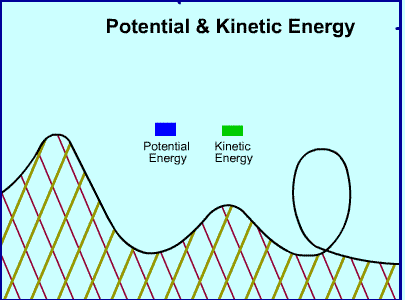
Rollercoaster GIF
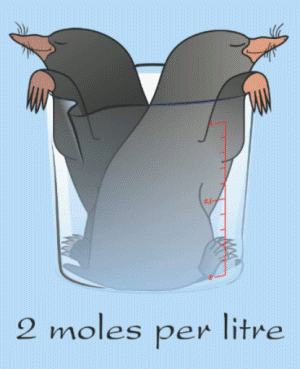
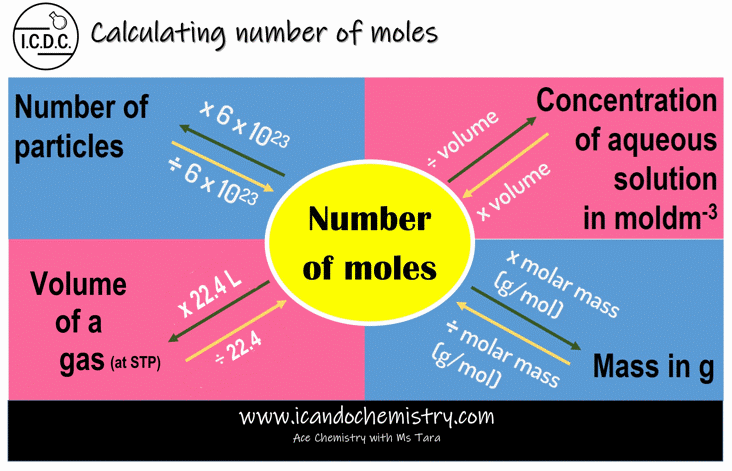
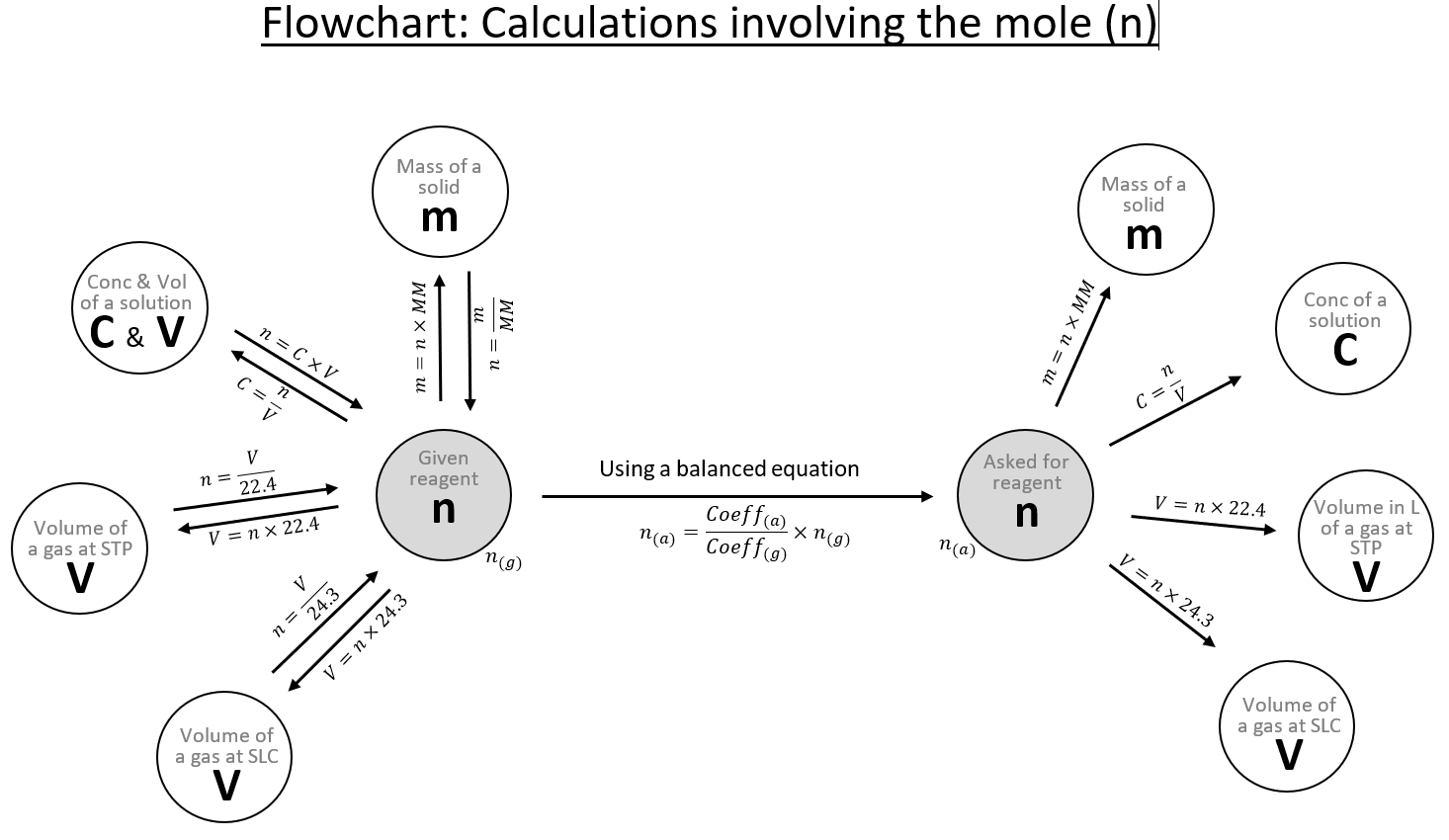



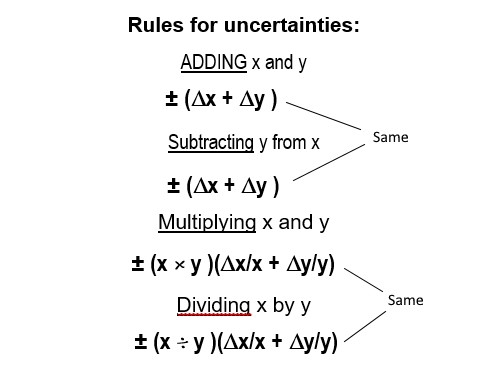
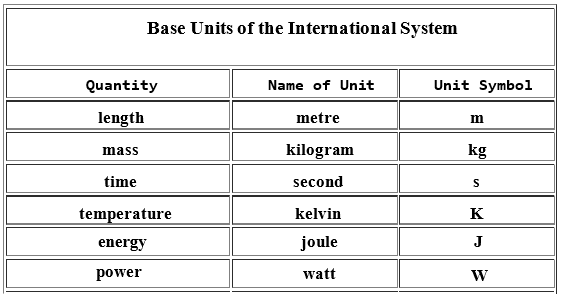
Click on the pic above to go to rollercoaster example - try clicking STEP rather than play.
Below is an interactive showing the ecological footprint index of all countries per capita. On the right is a scroll and zoom in bar.
To see detail zoom in using your browser setting to 150%

